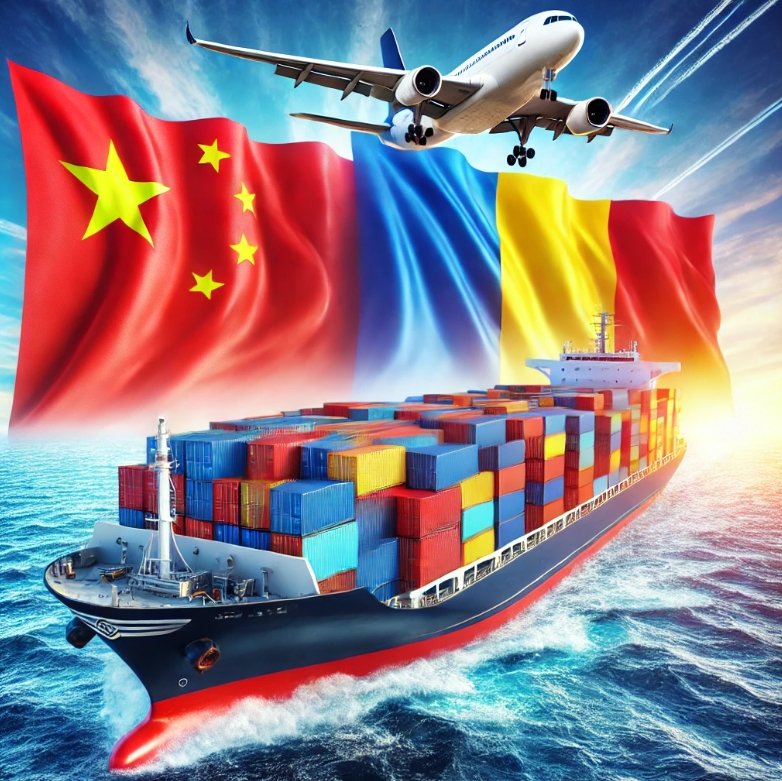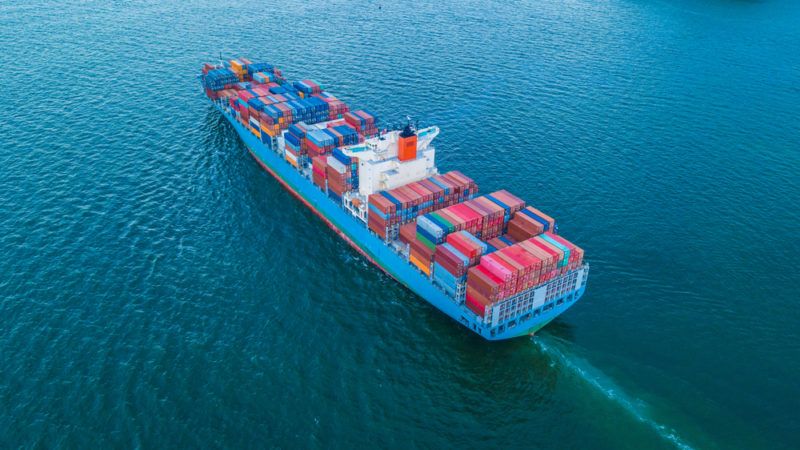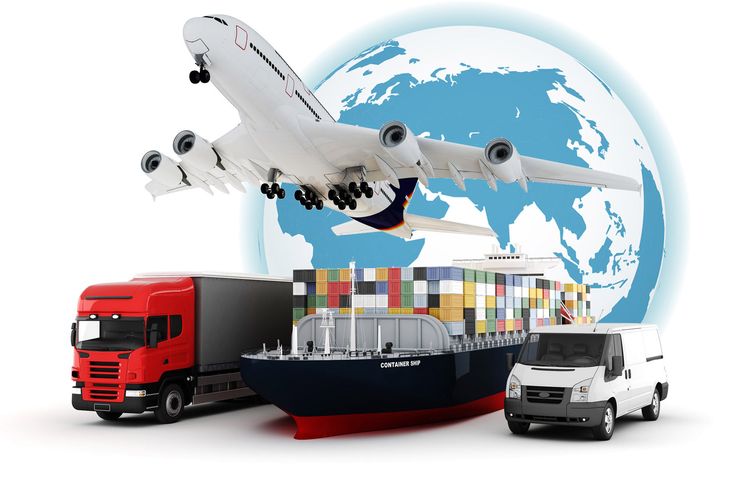- By TOP CHINA FREIGHT
- August 26, 2025
- Shipping
Shipping cost China to Romania can quickly eat into your profit margins if not carefully planned. Picture this: you’ve secured a major order from a Chinese supplier, but unexpected fees, long transit times, and hidden charges threaten your bottom line. This guide explores transport options, cost-saving strategies, and operational tips to help your business ship efficiently, reduce expenses, and ensure timely delivery.

1.Understanding Your Shipping Cost China to Romania
Sea, air, or rail. Each has different transit times, costs, and limitations.
LCL, FCL, or pallet shipments influence pricing significantly.
FOB, CIF, DDP impact who pays for transport, insurance, and customs.
Proper HS code classification avoids fines.
Peak shipping periods increase rates.
Port-to-destination fees in Romania can add up.
Actionable Advice:
- Always calculate total landed cost, not just freight fees.
- Consolidate shipments to lower per-unit shipping cost.
- Compare multiple freight forwarders for competitive rates.
| Transport Mode | Transit Time | Typical Cost | Best For | Notes |
|---|---|---|---|---|
| Sea Freight | 25–35 days | $800–$1,500 per 20ft container | Bulk goods, non-urgent | Cheapest for heavy cargo; weather-dependent |
| Air Freight | 5–10 days | $5–$10/kg | High-value, urgent goods | Fastest; expensive |
| Rail Freight | 20–25 days | $1,200–$1,800 per container | Medium-volume shipments | Balanced cost-speed; limited last-mile flexibility |
2.Choosing the Right Transportation Method

Sea Freight: Ideal for Bulk Shipments
Sea freight is the most economical option for heavy shipments
Best for:
- Raw materials, furniture, electronics in large volumes.
Transit time:
- 25–35 days from major ports like Shanghai, Shenzhen, Ningbo to Constanța.
Cost strategy:
- FCL is cheaper per unit than LCL; consider consolidation for smaller orders.
Tips:
- Book in advance for peak seasons.
- Avoid holidays like Chinese New Year to prevent surcharge spikes.
- Use trusted forwarders for better space allocation and port handling.

Air Freight: Speed at a Premium
Air freight offers rapid delivery for time-sensitive or high-value goods
Best for:
Electronics, fashion, medical supplies.
Transit time:
5–10 days, including customs clearance.
Cost:
$5–$10/kg; may vary for oversized cargo.
Advantages:
Fast delivery, minimal handling, low damage risk.
Consideration:
Only cost-effective for small, high-margin, urgent shipments.

Rail Freight: The Balanced Alternative
Rail freight from China to Europe is gaining traction
Best for:
Medium-sized shipments requiring faster delivery than sea.
Transit time:
20–25 days depending on route and border efficiency.
Cost:
$1,200–$1,800 per container.
Advantages:
Reliable schedules, eco-friendly, lower cost than air.
Limitations:
Limited flexibility; last-mile trucking often required.

Multi-Modal & Last-Mile Considerations
- Combine rail + trucking for efficient last-mile delivery.
- Evaluate proximity to ports and rail hubs in Romania.
- Consider customs efficiency at different ports to minimize delays.
Transport Mode | Transit Time | Typical Cost | Best For | Key Considerations |
|---|---|---|---|---|
| Sea Freight | 25–35 days | $800–$1,500/container | Bulk goods | Economical, weather-dependent |
| Air Freight | 5–10 days | $5–$10/kg | Urgent, high-value | Expensive, minimal risk |
| Rail Freight | 20–25 days | $1,200–$1,800/container | Medium shipments | Requires last-mile planning, fixed routes |
Actionable Advice:
- Assess shipment volume, urgency, and cost together before selecting the transport method.
- Explore multi-modal solutions to optimize both cost and transit time.
- Regularly review shipping performance and adjust strategy based on seasonal trends.
3.Seasonal Shipping Cost Variations
Shipping cost China to Romania fluctuates due to peak seasons:
- Chinese New Year (January–February): Container shortages; prices surge 10–20%.
- Summer Holiday (June–August): Increased demand for consumer goods; sea freight rates rise.
- Pre-Christmas Peak (October–December): Air freight demand spikes for electronics, fashion.
Tips to Reduce Seasonal Costs:
- Plan shipments early to avoid peak surcharges.
- Consolidate shipments during peak periods to reduce per-unit cost.
- Negotiate long-term contracts with forwarders for predictable rates.
4.Avoiding Hidden Fees
Unexpected fees can inflate total shipping cost:
- Port handling, customs clearance, demurrage, local trucking, and terminal storage.
Preventive Measures:
- Ask for all-inclusive quotes.
- Schedule shipments during off-peak periods.
- Use experienced forwarders familiar with Romanian ports and regulations.
| Hidden Fee Type | Typical Cost | Prevention Strategy |
|---|---|---|
| Demurrage | $50–$100/day | Timely pickup |
| Port Handling Fees | $100–$300 | Confirm before booking |
| Customs Clearance | $50–$200 | Experienced customs broker |
| Local Delivery | $200–$500 | Include in contract |
5.Documentation and Compliance
Essential documents for smooth shipping:
1.Commercial Invoice
declares product value.
2.Packing List
details quantity, dimensions, weight.
3.Bill of Lading / Air Waybill
proof of shipment.
4.Certificate of Origin
enables preferential tariffs.
5.Import Licenses / Certificates
for restricted goods.
Pro Tip:
Automate documentation with your forwarder to avoid delays and fines.
6.Cost-Saving Strategies
Combine small shipments into one container.
Non-urgent goods can use slower transport.
Protect against losses during transit.
Negotiate volume discounts.
Certain goods may have reduced tariffs.
Reduce delays, paperwork errors, and hidden fees.
7.Shipment Tracking and Delivery Optimization
Efficient tracking reduces storage fees and ensures timely delivery:
- Real-time shipment tracking via forwarder portals.
- Plan last-mile delivery in Romania to minimize trucking costs.
- Use centralized warehouses near ports to streamline distribution.
Case Example:
A Romanian furniture importer consolidated 3 small shipments into one rail container. Cost decreased 18%, and lead time was reduced by 5 days.
8.Choosing Ports and Routes
Major Chinese ports:
Shanghai, Shenzhen, Ningbo, Guangzhou – competitive rates and frequent sailings.
Romanian ports:
Constanța – main entry point; efficient customs clearance.
Alternative routes:
Sea freight to nearby European ports (e.g., Hamburg, Rotterdam) + trucking to Romania may reduce transit delays for certain cargo.
Tip:
Evaluate route options based on cargo type, transit time, and shipping cost.
9.Recommendations by Cargo Type
| Cargo Type | Recommended Transport | Notes |
|---|---|---|
| Bulk materials | Sea Freight | Cost-effective, slow transit |
| Electronics | Air Freight | Fast, minimal handling |
| Furniture / Home goods | Sea or Rail | Consolidate for lower cost |
| Medium-sized machinery | Rail Freight | Balanced speed and cost |
Conclusion
Optimizing shipping cost from China to Romania requires careful planning, strategic transport selection, awareness of seasonal cost fluctuations, and proper documentation. Using consolidation, flexible transit schedules, and experienced freight forwarders can save significant costs and improve delivery reliability. Request a personalized quote to see exactly how much you can save and streamline your China-to-Romania shipments.
Need a Shipping Quote?
If you want expert guidance and peace of mind, our team is ready to assist.
TJ China Freight offers tailored solutions to help businesses of all sizes ship more reliably from China.
FAQs
Q1:How can I reduce shipping cost from China to Romania for small shipments?
- Consolidate multiple small orders into one container (LCL).
- Use rail freight instead of air freight for medium-sized shipments.
- Negotiate rates with freight forwarders for recurring shipments.
Q2:Which Chinese ports offer the best rates for Romania shipments?
- Major ports like Shanghai, Shenzhen, Ningbo, and Guangzhou provide competitive rates and frequent departures.
- For faster handling, choose ports with high container throughput and reliable customs clearance.
Q3:Are there seasonal factors affecting shipping cost China to Romania?
- Yes, peak periods like Chinese New Year, summer holidays, and pre-Christmas can increase rates by 10–20%.
- Planning shipments in off-peak periods can save costs and avoid delays.
Q4:What documents are essential for shipping from China to Romania?
- Commercial Invoice
- Packing List
- Bill of Lading / Air Waybill
- Certificate of Origin
- Import Licenses or Certificates for restricted goods
Q5:Can I insure my shipment to reduce risk?
- Yes, cargo insurance is recommended for all international shipments. Options include all-risk, named-perils, or carrier liability coverage.
- Insurance cost is usually a small percentage of total shipment value but protects against potential losses.
